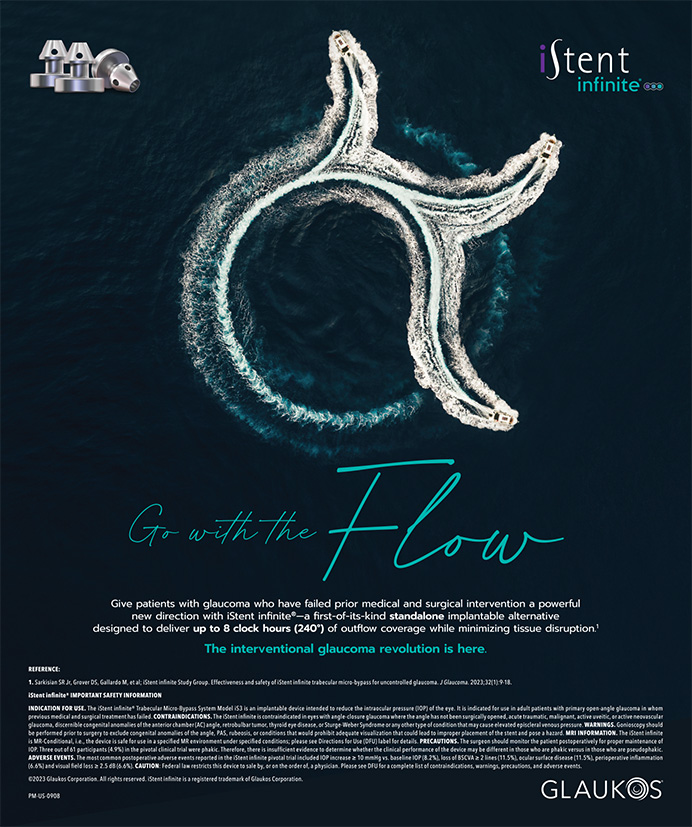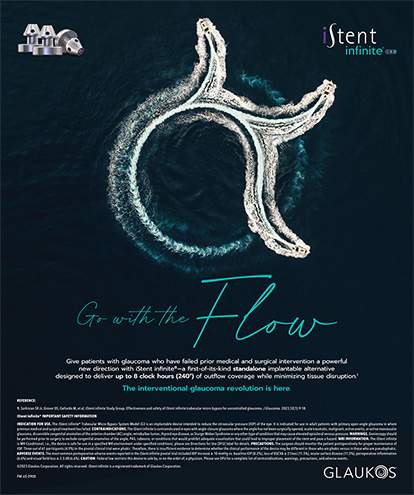The LASIK industry has certainly experienced highs and lows during the past decade. In 2000, according to Market Scope (St. Louis, MO), procedural volume was at an all time high of 1,427,700 procedures, but it has since declined significantly.1 In 2008, the industry took a hit with the FDA investigational hearings, and after the economic shakeup of 2008 and 2009, the industry reached a decade-long low for procedural volume in 2009 at 759,000 procedures.1 About the only good news is that LASIK volume has nowhere to go but up!
MARKET FORCES WORKING CORRECTLY
Most Americans know several people who have had great success with laser vision correction. Political leaders including former President George W. Bush have referred to the LASIK industry as a model of how market forces can work correctly in health care economics.2 With such positive buzz, an economy slowly returning to life, and consumers’ rising confidence, LASIK volumes are expected to recover from being down 25.9% across the country in 2009 compared with 2008.1 As the economy continues to improve, Market Scope estimates volumes in 2010 will climb to 850,000 procedures. Despite the expected rebound, many challenges face refractive surgery practices in 2010, such as incorporating expensive, new technology and developing cost-effective options for how patients locate and choose their practice and surgeon.
Many factors, including local and national market forces, govern the economics of LASIK as an elective surgical procedure. For a time, competition from discount LASIK providers drove down the price of the procedure. However, with the widespread adoption and implementation of advanced technologies like wavefront-guided and bladeless LASIK, the overall cost of laser vision correction has risen consistently for the industry during the past several years.
It is a common goal among ophthalmic practices to increase refractive volumes and market share. One way to achieve this is to capture patients who might otherwise never approach a practice’s doorstep. In today’s economic climate, patients are seeking preferred pricing for LASIK through their employer’s and insurance carrier’s value-added programs. Recent trends have shown that a growing number of patients are using these alternative avenues to locate LASIK surgeons. One solution to combat declining LASIK volumes is to become a provider for value-added programs.
In the past, some practices have attempted to target the LASIK consumer who is looking for a lower price point by offering tiered pricing. One major disadvantage of this approach is the possibility of cannibalizing existing patients who might have otherwise paid a higher price for LASIK. Practices can, however, discreetly offer a lower price point by joining a national LASIK program that offers preferred pricing.
AN ALTERNATIVE OPTION
Accessing Health Plan Groups
Founded 6 years ago, QualSight, Inc. (Chicago, IL), is an organization that contracts with health plan sponsors to provide a LASIK program to its members. QualSight, Inc., works with independent ophthalmologists. The program’s participating health plan sponsors include HMOs, insurance companies, unions, large corporate employers, and affinity plans—the same organizations being pursued aggressively by the corporate chains. QualSight, Inc., serves 60 million eligible members and aims to expand its reach to 70 million by the end of 2010. The current provider network of QualSight, Inc., is represented in most metropolitan markets and in many large secondary markets. What differentiates the organization from other companies with similar business models, such as TLC’s TruVision or Advantage Program (Chesterfield, MO), is that QualSight, Inc., operates an open network, works with independent surgeons, and is not linked to a corporate parent.
An Additional Source of Procedures and Revenue
QualSight, Inc., does not aim to be the main source of patients for a LASIK practice. Rather, the plan is designed to serve as a value-added revenue program by giving each practice the ability to generate incremental revenue without incurring additional advertising or marketing costs or the cost of patient financing. Furthermore, the company’s clients are plan sponsors, which will enable participating practices to have access to patients whom they normally would not otherwise see. Often, QualSight, Inc.’s patients have said it was worth driving many miles in order to have access to the network of doctors offering such substantial savings by their trusted plan sponsor.
Another goal of the program is to create value for practices. To that end, the company operates an opennetwork policy but limits the active recruitment of new providers in each patient demographic location to prevent oversaturation of the market. The program’s providers have the opportunity to generate additional revenue with procedures and services such as customized and bladeless LASIK and PRK and by offering lifetime assurance plans. The organization establishes the fees for each of these procedures and takes into consideration the additional revenue the patient will provide to its participating providers. Further revenue may be generated from word-of-mouth referrals by the family and friends of patients of QualSight, Inc., who do not have the plan and therefore pay a higher price for services.
Managing Patients
A member calls a dedicated toll-free number, and a care manager for the plan answers the person’s questions. The care manager verifies the patient’s eligibility and prescreens him or her for contraindications. The practice does not take the initial call or have its name published, which reduces its exposure as a preferred pricing provider. The member then selects a local, URAC-credentialed doctor from the participating network, and the care manager will make a three-way call to the selected practice to schedule the initial LASIK consultation. QualSight, Inc., collects a refundable deposit from the member to ensure a sincere and motivated candidate. If necessary, the organization also arranges for financing and absorbs the fees. Members who have medical conditions that preclude them from undergoing LASIK are referred to participating providers to receive appropriate medical care. This referral can help participating practices to generate revenue from non-LASIK patients.
A COST-EFFECTIVE WAY TO COMPETE
In the future, only those practices that maintain a significant and regular volume of LASIK patients will survive. Some surgeons who occasionally performed LASIK have all but stopped providing the procedure, probably as a consequence of not securing a consistent flow of patients, price-related competition, and the cost of new technology. Private surgeons may not be able to contend with the deep pockets of corporate centers and other aggressive marketing tactics, but that does not mean that they have to settle for reduced volumes or sacrifice serving patients who are looking for the best value. Participating in a provider network such as QualSight, Inc., is a cost-effective way for a practice to expand without incurring additional advertising, marketing, and financing costs or using the staff’s time to take calls. In addition, participation can help keep practices’ appointment books full by drawing from a patient base that might otherwise be lured by discount pricing.
Parag A. Majmudar, MD, is an associate professor, Cornea Service, Rush University Medical Center, Chicago Cornea Consultants, Ltd. He is on the medical advisory board for QualSight, Inc., but acknowledged no financial interest in the company. Dr. Majmudar may be reached at (847) 822-5900; pamajmudar@chicagocornea.com.
- Market Scope. Quarterly Updates on the US Refractive Market.Q4-2009 US Refractive Update.Market Scope. http://www.market-scope.com/market_reports/refractive_reports.html.
- Zdechlik M.Bush focuses on health care ‘transparency’in Minnesota visit.Minnesota Public Radio.August 22, 2006.http://minnesota.publicradio.org/display/web/2006/08/22/bushvisit/.Accessed March 2,2010.


